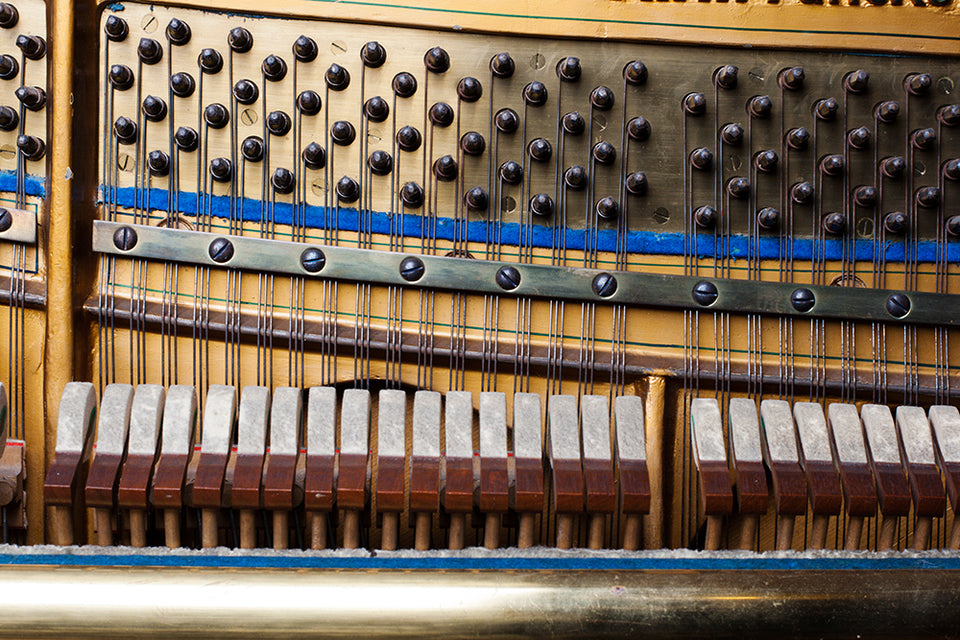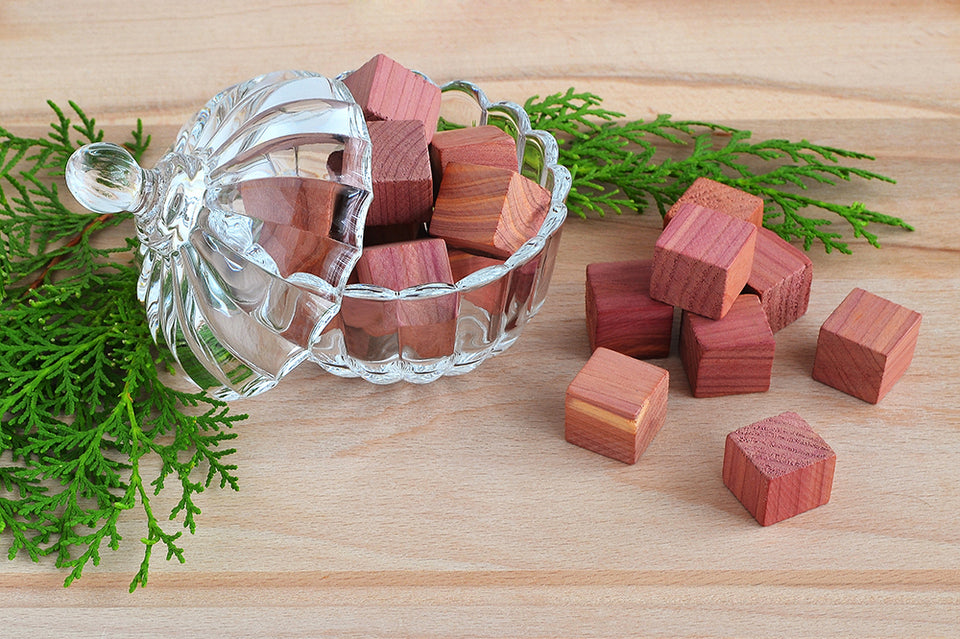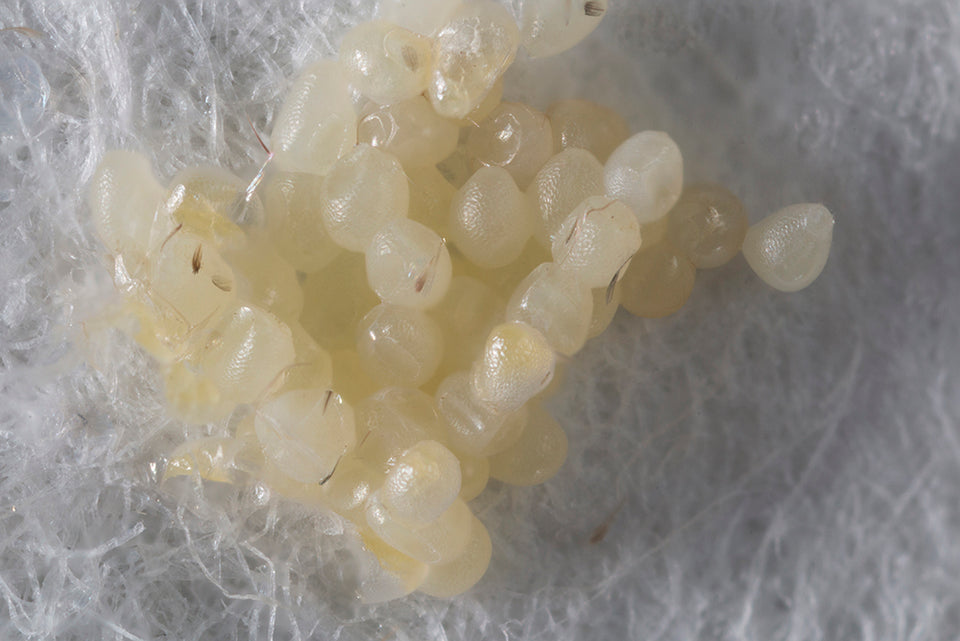How to Prevent Moths in a Piano: Felt, Moths, and Keys for Success

No question about it, having moths in your home is frustrating. Clothes Moths and Carpet Moths can destroy fabrics like wool, fur, silk, and felt. But did you know that they can also damage your piano? It's true! Pianos have felt linings on their interior string hammers, soundboards, and frames. Musical instrument-grade felt is made using thick, coarse, condensed woollen fibres. When you combine this dense, tasty wool with a piano's dark spaces, nooks, and crannies, you have a wonderful place for moths to settle in and set up shop!
So what can be done? That’s what we’ll cover right here in this guide for moth prevention and piano protection! Below is some key information for preventing or removing moths in your piano.
Moths in Piano Keys, Crevices, and Frames
No one wants to be playing the piano when a flutter of moths fly out! What better proof that you haven't been practising? All puns aside, moths can cause serious damage to pianos. Pianos are the perfect environment for adult moths to lay their eggs. After all, piano frames are dark and filled with concealed crevices. Also, many pianos are positioned in low-traffic areas in quiet parts of the home. With plenty of tasty woollen fibres for Moth Larvae to eat, a piano that isn’t played regularly is a great place for moths to settle in and lay eggs! The eggs hatch into larvae, and the larvae destroy the piano’s felt and natural interior fabric fibres.
Replacing your piano hammers can be expensive. Having a piano professionally treated for a moth infestation can be equally expensive. Luckily, removing moths from your piano isn't an incredibly difficult process. You can easily accomplish the task yourself with fumigation and moth bombs. Preventing moths from nesting in your piano in the first place is even easier by using cedar and moth-killing strips.

How do I Get Rid of Moths on My Piano?
So how can you get rid of moths in your piano? There are many options available to you. Here's what to know!
For Widespread Moth Infestations in a Room with a Piano
If you already have a moth infestation in your piano, be aware that it has likely spread to other areas of your home as well. At this point, it may be wise to fumigate the room with the lid of your piano wide open. This should significantly reduce or even eliminate adult moths and larvae.
Be sure to thoroughly vacuum and clean the entire room after fumigation is finished. It may also be wise to have someone help you lift up your piano to be sure there is nothing moth-related underneath it. Clothes and Carpet Moths love the tight crevices between the bottom of a piano and the carpet pad.
For Localized Infestations in a Piano Only
Sometimes, your piano becomes infested with moths because it was sitting in a garage or storage unit. If the infestation is localized and you only need to treat your piano, you can use a water-based pyrethrin spray like Fortefog Natural Protector Aerosol. Avoid using any oil-based aerosol sprays on your piano’s hammers and interior parts. These sprays could leave residues that will harm the piano’s inner mechanisms. Next, close the piano lid. Do this immediately after spraying to concentrate the spray’s power inside your piano.
After following the instructions of the moth removal product of your choice, be sure to thoroughly vacuum your piano. You may need to vacuum under the hammers as well.
Preventing Moth Infestations in a Piano
Whether you have already treated your piano for moths or want to prevent moths from laying eggs in the first place, there are many options to choose from. If you just exterminated the moths inside your piano, it is best to reinforce the treatment with a natural preventative solution. Cedar is a wonderful choice.

Cedarwood chips smell amazing and won’t hurt your piano. We recommend refreshing cedarwood every 6 to 8 weeks. This can be achieved by lightly sanding the cedarwood or applying a few drops of oil to the cedar. Fragrance-free moth killer strips are also helpful if moths are present. Moth killer strips will actively kill all stages of the moth life cycle.
Frequently Asked Questions
Now, let's go over some frequently asked questions regarding moths and pianos. That way, you will have a comprehensive understanding of this problem and better understand how to deal with it.
Can Moths Damage a Piano?
Yes, moths can damage a piano by eating the felt from piano hammers and other mechanical components. Additionally, moths leave behind casings, excrement, and more. These little fragments can get into the inner workings of your piano and impact the way it sounds and plays.
Does Felt Attract Moths?
Yes, felt attracts moths. Especially if that felt is in a dark spot like a piano frame. Clothes Moths are insects that eat natural fibres. These pesky insects feed exclusively on animal fibres and natural materials. They are particularly fond of wool, silk, feathers, felt, fur, and leather. These materials contain a substance called keratin, a fibrous protein.
Although adult clothes moths don't eat anything, their larvae will often have a ravenous appetite. The primary function of an adult Clothes Moth is to mate, find a suitable place to lay eggs, and die. The larvae of the Clothes Moth will then bring destruction to the nearest keratin-rich natural materials.
Where to Find a Moth Nest?
Although Clothes Moths don't technically create nests, they do look for quiet, dark, undisturbed nooks and crannies where they can lay a pile of sticky little eggs. These locations will almost always be near, or actually stuck on natural fibre food sources.
Instead of looking for some kind of moth nest, look for piles of eggs clinging to fabric fibres. Moth eggs are usually whitish, cream, or yellow in colour. They are very small, about the size of a grain of sand. Most often, these eggs are laid in a pile or line that sticks to the fabric fibres nearby. This can make them hard to spot, especially if they are on the underside of fabric or in a dark corner.

After the eggs hatch, finding many larvae in one place isn’t difficult. People sometimes mistake the presence of Clothes Moth Larvae for the presence of a moth nest. However, it is more likely that multiple larvae hatched around the same time and started consuming fabric in the same general vicinity. Since these larvae leave behind damage and clues like fibre scraps, casings, and excrement, it can seem as if they have made a nest. However, what you're looking at is more of a moth mess than a moth nest. Still, if you find the leftovers of a moth larvae feast, there's a chance that more eggs could be nearby. You should take measures to exterminate any other Clothes Moths in your home.
All in all, moth egg or larvae “nests” are clear indicators that more moths could be lurking in your home. Treat these areas right away and then take preventative measures to keep moths from coming back later on.
What Species of Moths Damage Pianos?
Clothes and Carpet Moths can damage the felt or natural fabric fibres inside your piano. There are two main species of Clothes Moths: Webbing Moth and the Casemaking Moth. Both moth species and their larvae are similar in appearance. The bodies of the larvae are cream-coloured, with darker, brown heads. The Casemaking Moth tends to make a bigger mess as it consumes fabric, leaving behind casings that are easy to find. The Webbing Moth is similar but with a golden-coloured body. Both moths will happily destroy the felt on your piano's hammers and eat your other natural fabrics.
How to find Moths in Piano Keys?
It's pretty easy to spot moths inside of a piano. Although there is no such thing as a moth nest, these pesky insects leave behind plenty of evidence. Casings, excrement, and other icky leftovers are fairly easy to spot with a flashlight.
If you have a grand piano, you will usually have an easier time identifying a moth infestation. Stand-up pianos have the disadvantage of numerous lateral crevices, which can make seeing the inside of them more difficult. Still, you will know if you have an infestation based on evidence like damaged felt. If you notice damage or signs of moths in your piano, you should take extermination and prevention measures.
How to deal with Moth Infestation in Piano: Final Thoughts

No one wants their piano damaged by moths! The best way to deal with the threat of moths is to prevent them in the first place by using cedar products. If you already have an infestation, fumigation will help you get rid of it. Then, clean your piano and vacuum the area thoroughly. Finally, use preventative moth killer strips and cedar to keep those pesky insects from coming back!
About MothPrevention
MothPrevention® speak to customers every day about their clothes moth issues - clothes moths are a species that are ever increasing and that can cause significant damage to clothes, carpets and other home textiles.
To date, we’ve helped over 250,000 customers deal with their moth problems. We have developed professional grade solutions including proprietary pheromones and trap design engineered to the highest production standards.





